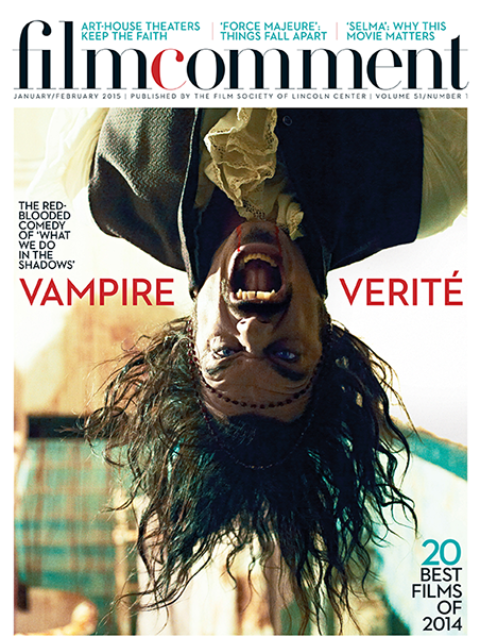
We are in a desert of reddish limestone, with a scattering of sparse acacias. A group of men, all holding AK-47s, moves toward a pickup. Amidst them is a Western prisoner with an exhausted air and a several-months-old beard, his emaciated face partially hidden behind the folds of a turban. Are they going to set him free? Decapitate him? The scene could be taking place in Syria or Iraq. But we are in the center of Sahel, a holy city and World Heritage Site, a few kilometers from Timbuktu.
Set in a Malian backyard, Abderrahmane Sissako’s previous film, Bamako (06), plays out the trial of several international organizations accused of bleeding Africa dry. In
How do you film jihadists? Like characters in a Beckett play. Dislocated (a man tries to start his old car in the middle of the dunes). Incoherent (a young recruit pitifully stumbles through the text of a propaganda video). Stammering out a vague approximation of Arabic (henceforth, Songhai, the native tongue of Mali, will be regarded as an unholy language).

What do we make of a language lost between authoritarian barking—“No smoking! No listening to music! No soccer!” announces a motorcyclist riding around the city—and utter triviality? This contradiction gets to the very heart of the film’s characters. Abdelkrim, the childlike head jihadist, disappears at regular intervals to have a smoke and debate the relative merits of Zidane and Barcelona—when he’s not forbidding all ball games.
Absurd? That’s precisely the point of a film that sets up a dialectical opposition between Islam and fundamentalism. Absurd and bloody. When the town crazy-woman, a chicken in her arms, comes down into the street, the red train of her dress spread out over the beaten ground is like a foreshadowing of the drama to come.
The vignette structure of which Sissako is fond riddles the story with questions. What happened to the Western hostage? To the young fishmonger? To the children who, in one of the movie’s most beautiful scenes, take turns dribbling an imaginary soccer ball? In Timbuktu, ellipses and off-camera events constantly destabilize the frame.
The only explicit atrocity shown is a stoning: a man and a frantic-looking woman, buried up to their necks. The dull thud of the first rock, then blood flowing. With unanswerable cruelty, intelligence, and elegance, Sissako stages the unfilmable by linking it to the more delirious: away from his men, Abdelkrim leaps and capers, attempting a clumsy, savage choreography, arms reaching out to the skies, before dropping heavily to the dusty ground. Later, a shepherd girl holds a cell phone up to the same sky to speak with her father, who has been arrested by the jihadists. But the sky remains silent. There’s no transcendence down here, just a series of disasters perpetrated by a gang of vulgar thugs passing laws in the name of a God they don’t know the first thing about. They’re mere parasites over which loom the ramparts and the culture of an ancient civilization. Statues never die.








